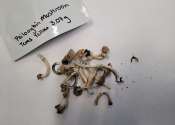Partnership plans to produce Mo-99 to fill global demand for medical applications
SHINE Medical Technologies and partner Phoenix LLC have developed a new way to produce molybdenum-99 (Mo-99) for use in medical applications. They claim that testing has shown their new technology breaks the world record ...






.jpg)

